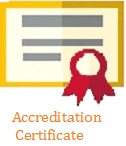Influence of SP-36 and Phosphate Rock on Changes in Soil Available P, Leaf P Content, and Growth of Physic Nut (Jatropha curcas L.) in an Ultisol
Abstract
A study was carried out to determine the effects of rates and types of P fertilizer (SP-36 and Phosphate Rock) on the growth of physic nut (Jatropha curcas L.), leaf P content, and soil available P in an Ultisol in a glasshouse. The treatments consisted of four rates of P (0, 50, 100 and 150 mg P2O5 kg-1 soil) given in two different types of P fertilizer, namely SP-36 (total P2O5 = 36%) and Phosphate Rock (total P2O5 = 28%, particle size distribution = 75%<0.25 mm, 85%<0.50 mm, 90%<1.00 mm). Treatments were arranged in a Completely Randomized Design with three replications. The results showed that at the rates of 50 and 100 kg P2O5 ha-1, there was no difference in soil available P due to the application of SP-36 and Phosphate Rock, indicating that both types of P fertilizer had the same dissolution values after 8 months of P fertilizer application. At the rate of 50 kg P2O5 ha-1, the application of SP-36 and Phosphate Rock gave the same leaf P content. This could indicate that up to the first 8 months, the addition of the cheaper Phosphate Rock and the SP-36 to the soil had similar effectiveness. The response of tree biomass to P fertilization followed a quadratic pattern, in which for the application of Phosphate Rock, the P optimum rate was achieved at the rate which was lower than that for the application of SP-36. This suggests that the application of Phosphate Rock to physic nut trees was more efficient and effective compared to the application of SP-36.
Keywords: Leaf P, phosphate Rock, physic nut (Jatropha curcas L.), soil available P,
Keywords
Full Text:
PDFDOI: http://dx.doi.org/10.5400/jts.2014.v19i1.9-15
Refbacks
- There are currently no refbacks.
INDEXING SITE
This work is licensed under a Creative Commons Attribution 4.0 International License.

















